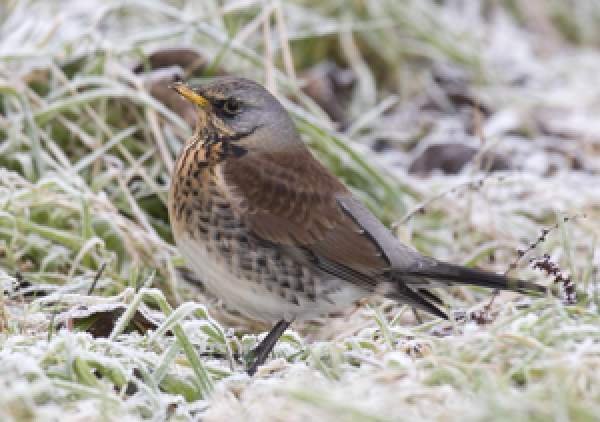Fieldfare
Turdus pilaris

With its striking, richly coloured plumage, the Fieldfare is an impressive and large member of the thrush family. The head is grey, as is the rump, which contrasts with the black tail and the rich chestnut-red back and wings, the latter with much black in the longer flight feathers. The chest and flanks are heavily speckled with dark spots. The most often heard call note is a harsh, aggressive sounding ‘chack-chack’.
As a winter visitor, Fieldfares begin to arrive in October, continuing through until the end of November. These arrivals are later in years with good berry crops in Scandinavia. In bad years, as many as a million Fieldfares may have no alternative but to head over the sea to the British Isles in the hope of finding winter sustenance.
These winter flocks prefer open countryside, bordered by well-developed hedgerows and woodland, only coming into gardens in the harshest winter weather when the ground is frozen and soil invertebrates are not available – many people think of Fieldfares as fruit-eaters but in fact, this is not the case, they much prefer grubs and worms, switching to windfall apples and berries when these invertebrates are unavailable.
Fieldfares often breed in loose colonies and are very vigorous in their defence against predators. There are even reports of birds ramming Magpies and Jays in flight! Some observers are sure that there are actually ‘guard’ Fieldfares which will escort potential predators away from the colony. However, the most characteristic defence is well-aimed defecation directed at the intruder. Much like Mistle Thrushes, they will defend winter food sources, like apples and berries.
Find out more about Fieldfares on BirdFacts and the Wider Countryside Report.






Share this page